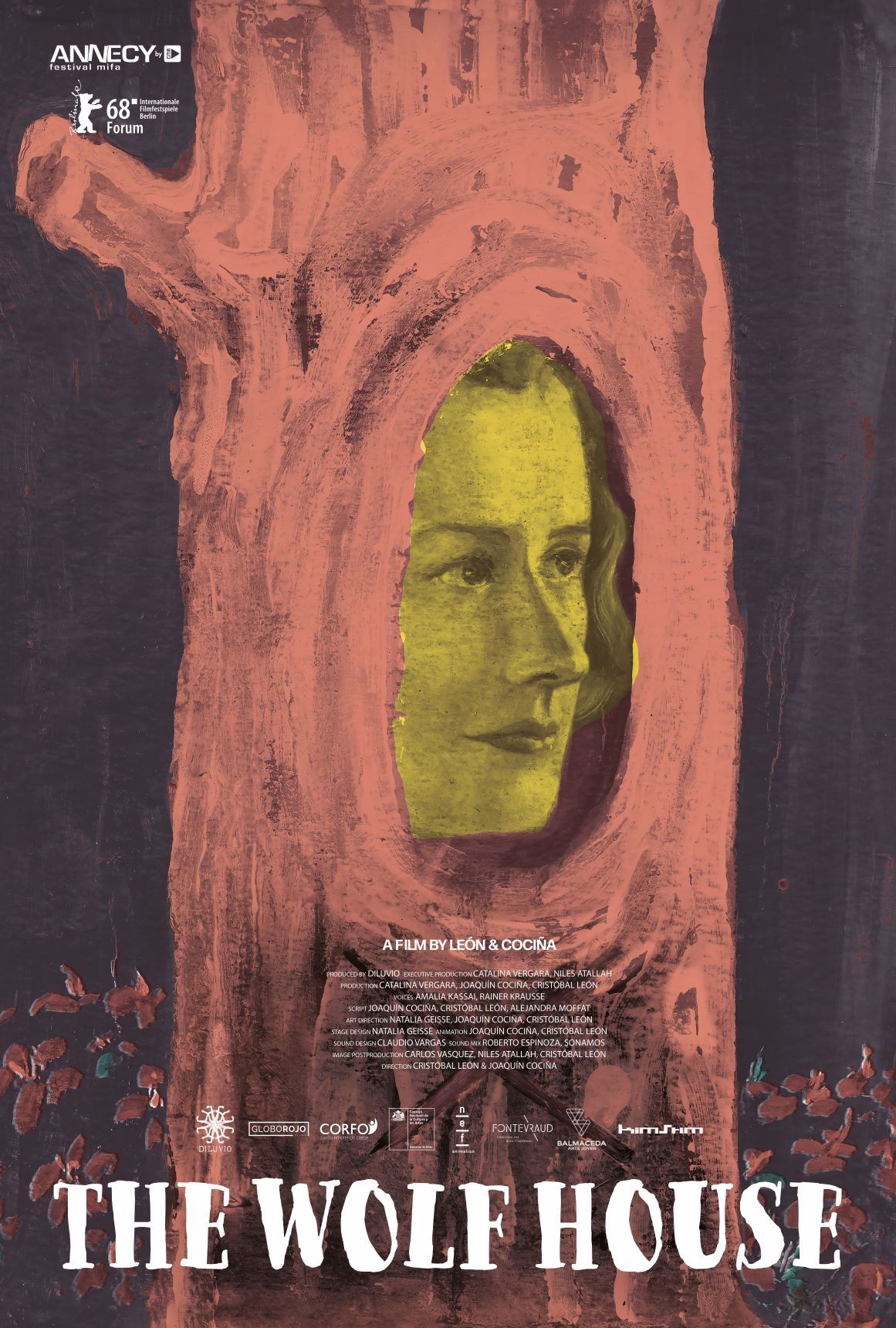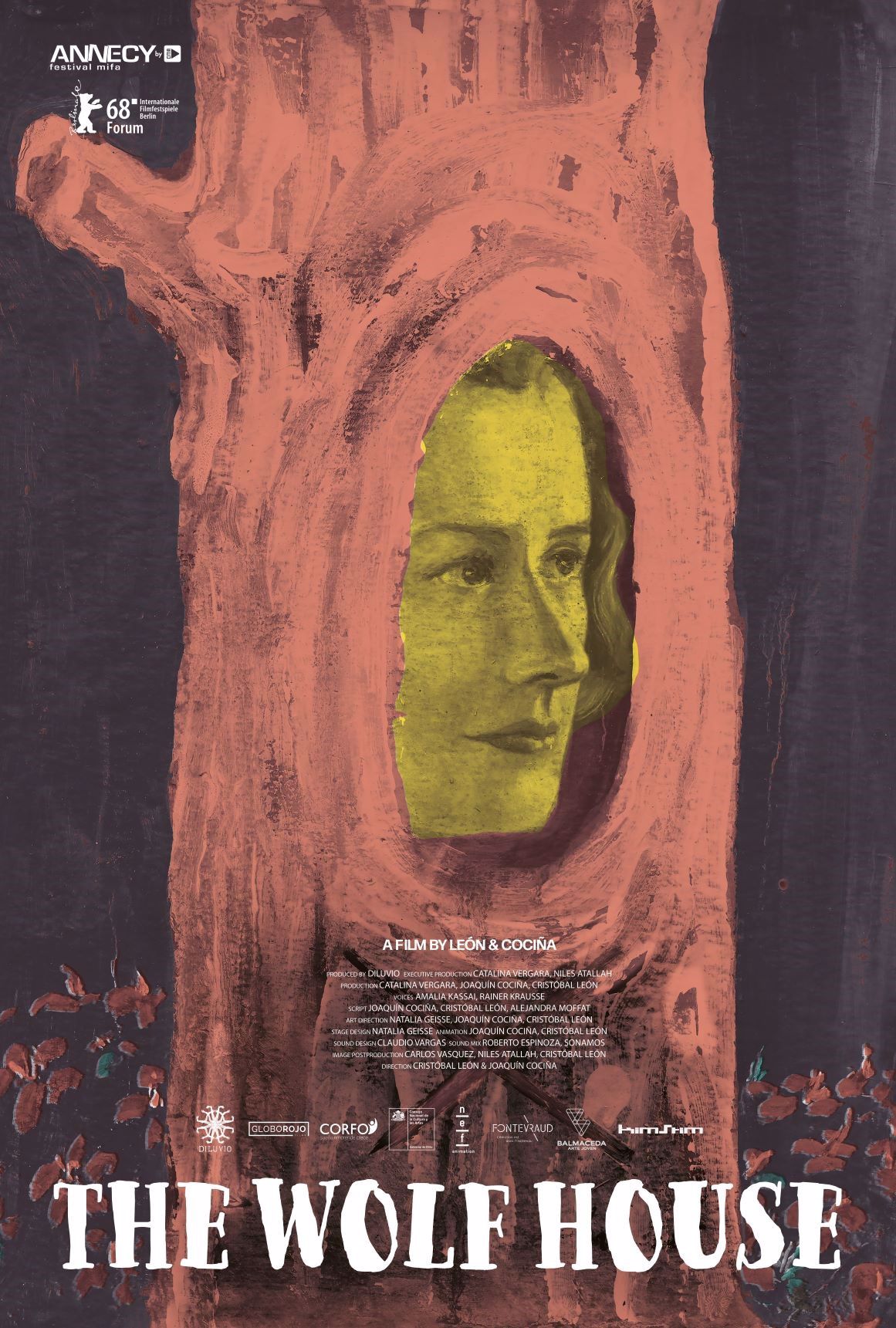
The Wolf House (La Casa Lobo) is like a fairy tale out of the Brothers Grimm. The twisted fables collected by those German authors definitely had an edge. Yet this is even more unnerving. Striking! Innovative! Hypnotic! Bizarre! Mere adjectives aren’t enough to do it justice. If you’re familiar with the work of the Brothers Quay or Jan Švankmajer then you’ll have a reference point at least. For others, this will be unlike anything you’ve ever seen. Regardless, it will undoubtedly be the strangest movie you will see this year. This first premiered in February 2018 at the Berlin International Film Festival. Since then it has won a slew of awards and garnered widespread critical acclaim. It finally received a release in May 2020 in the U.S.
Maria (Amalia Kassai) is a young woman who escapes from a German community in the south of Chile. She takes refuge in a mysterious house in the woods. From that seed of an idea, emerges a stop motion animated tableau that is an unforgettable display of creative ingenuity. Her thoughts progressively infect the walls of the dwelling in which she lives. The surfaces come to life in a nightmarish vision. The Wolf House is a living, breathing physical room that is a painstakingly created tactile world. The art installation combines papier-mâché, puppets, sculptures, paintings, and other artistic methods to create scenes that were staged and photographed in various galleries throughout the world. This was accomplished over the course of several years in full view of the public. Cristóbal León and Joaquín Cociña are artists turned filmmakers with a series of shorts to their credit. This is their first feature and judging by the warm response, not their last.
This dark tale has its roots in a very sinister reality. Paul Schäfer was a Nazi sergeant that ultimately fled Germany after he was charged with pedophilia. He escaped to South America and it was there that he formed Colonia Dignidad (Dignity Colony), an isolated cult in the Andean foothills of eastern Chile. It was portrayed to the public as a bucolic agrarian utopia but was in fact closer to an authoritarian Nazi police state. Chilean dictator Augusto Pinochet used the colony as a detention camp to torture and execute political prisoners.
There are moments contained within this account I will never forget. Despite its disturbing inspiration, nothing presented is even remotely gory or violent. However, the eerie mood gradually works its way into your psyche and the effect can be unsettling. The narrative opens with an indoctrination video of an idyllic residence where the inhabitants live off the land in perfect harmony. The propaganda confers the settlement in a positive light. Supernatural developments ensue. Early on Maria finds two escaped pigs and she mothers them until they turn into human children. However, the ensuing production is not dependent on plot. Maria’s shoddy little shack is a constantly evolving nightmare of shapes and images. I sat there gobsmacked by the spectacle. During the chronicle, “the wolf” (Rainer Krause) is a foreboding presence that haunts Maria even after she escapes. His disembodied but seductive voice intones: “Maria…..Maria…..Maria.” He beckons her to return. It still gives me the chills.
09-03-20

Leave a comment